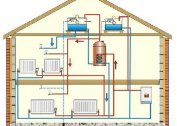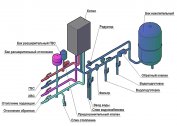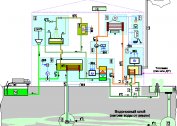Interruptions in the central heating system are not uncommon, a temperature below normal for a person brings a lot of inconvenience and problems, cold air can become a cause of disease. To stay in an apartment or a private house as comfortable as possible, you must provide your housing with an additional source of heat. The use of energy-saving heaters is suitable for this purpose.
Oil coolers
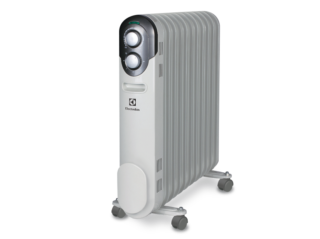 Today they are the most popular. They are convenient and easy to use at home. Their appearance remains unchanged from year to year. The main details of such a heater are:
Today they are the most popular. They are convenient and easy to use at home. Their appearance remains unchanged from year to year. The main details of such a heater are:
- the housing in which the entire "electrical part" of the radiator is located,
- metal sections with special oil inside, this oil is a coolant,
- the lower part of the sections with a heating element,
- on the side is a coil for winding the cord,
- device power switch
- Temperature regulator,
- wheels for convenient movement of the radiator,
- special carrying handle.
The essence of the oil domestic heater is that the heater transmits heating to the liquid coolant (oil). When warming up, the device uses a large amount of energy, a thermostat is installed to reduce it, which regulates switching the device on and off only when necessary.
Some models are equipped with additional heat transfer sources. For example, there are radiators with special vertical channels to provide powerful convection flows. In other models, built-in fans are used, which when turned on create a fairly quick heating of the air. And after that, you can switch it to normal operation.
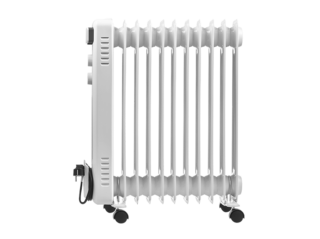 Oil radiators have several advantages, among them:
Oil radiators have several advantages, among them:
- affordable price,
- mobility when moving and transporting,
- ease of assembly of the heater and its operation,
- modern radiators have an emergency shutdown function.
The disadvantages of such devices are:
- long warm-up
- not attractive look
- the inability to leave him unattended, especially if children are at home. Metal sections can not only hurt painfully, but can cause burns if heated too much.
When using oil heaters, certain rules should be followed:
- it cannot be connected to an outlet through an extension cord
- not recommended for use in very small rooms
- When turned on, do not place close to a power outlet.
- Do not dry clothes on it.
Heating panels
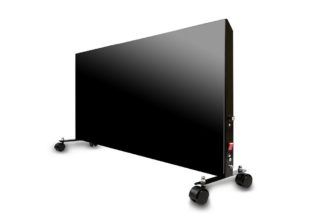 Not so long ago, quartz and ceramic panels that appeared in everyday life are already in quite high demand. Regardless of the material of the outer surface, the device has the same details:
Not so long ago, quartz and ceramic panels that appeared in everyday life are already in quite high demand. Regardless of the material of the outer surface, the device has the same details:
- metal housing with thermal insulation and a reflective substrate that directs heat
- heating element in the form of a spiral or special cable
- heat-resistant panel
- fixtures in the form of brackets for mounting on the wall.
Advantages of the panels:
- a large external plate serves as a source of infrared radiation, heat emits over a sufficiently large distance
- have protection against high humidity, and therefore can be installed in the bathroom
- Attractive and aesthetic appearance. The decor of the panel can be the most diverse - from imitation under a stone to drawing drawings with characters from fairy tales.
Cons of heating panels
- heavy weight, which makes shipping and installation difficult
- high level of heating.
Electric Modular Radiators
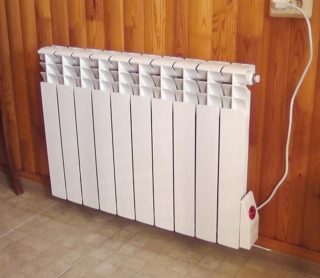 Outwardly similar to aluminum batteries, but unlike the latter, they do not crash into the wall during installation, as have electric heating.
Outwardly similar to aluminum batteries, but unlike the latter, they do not crash into the wall during installation, as have electric heating.
This type of heaters has devices with different operating principles:
- some of them are equipped with a liquid coolant, from which the radiator sections are heated
- another type is para-drop type heaters. The essence of his work is that the water in the device is heated to a state of steam, after which it condenses and gives off heat to the surface of the radiator
- the Italian company Sira Group has created another type of modular radiator, in each section of which a rod type heater is installed that directly transfers heat to the metal surface.
Almost all modular heaters are equipped with modern electronics, which allows you to configure them for a specific program, convenient for the owners.
Electric convectors
 The principle of operation of this type of radiator is the formation of thermal energy flows. They have a rectangular case, are mounted on the wall, which allows you to save the area of the room, but there are also devices on wheels.
The principle of operation of this type of radiator is the formation of thermal energy flows. They have a rectangular case, are mounted on the wall, which allows you to save the area of the room, but there are also devices on wheels.
The main details of such radiators are: an enameled metal case, openings at the bottom for receiving cold air, a heating element, openings for the exit of heated heat, a control panel with a power switch of the device, and a temperature sensor that disables the device’s operation if necessary.
Manufacturers invented such a subspecies of electric convectors as the “warm baseboard”. It differs from a conventional convection heater in appearance, has a low and long body, designed for location along the wall.
The advantage of these devices is that their surface does not heat up too much, and therefore it is impossible to burn themselves.
Their lack in dust transfer by convection flows. Dust can clog the radiator; it will have to be taken apart for cleaning.
Electric heat radiators with fan
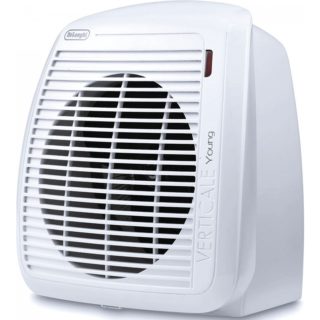 A heating element is located inside such a device, and the installed fan creates the movement of warm air. The heating elements used in such a radiator are in the form of an open spiral, a heater or a ceramic heating element.
A heating element is located inside such a device, and the installed fan creates the movement of warm air. The heating elements used in such a radiator are in the form of an open spiral, a heater or a ceramic heating element.
The advantages of thermal heaters with a fan include: quick heating of the room, compactness of the device and low cost.
The disadvantages are: noise during operation of the device, dust transfer by horizontal air currents.
Such heaters are used only for emergency heating; they are not suitable for the role of a constant and reliable heat source.
Any of the modern radiators, even the most expensive and powerful, will not fully show its properties if high-quality insulation of the apartment or house is not provided.
